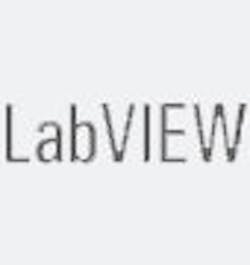LabView Style Book Is Worthy Read
To be sure, National Instruments LabView is a mainstay in many facilities. Its a very mature product and technology that supports various hardware and software platforms.
The LabView Style Book, by Peter Blume, president of Bloomy Controls, was written to be a comprehensive reference on LabViews recommended development practices.
LabView software is comprehensive, is complicated to some, and has a big learning curve for test, measurement, and control applications. With instructor-led training running at about $2,000 a session, a self-learning book might be the ticket to get up to speed on this software. Blume does suggest you have some basic knowledge first.
Good style is important, as Ive found in my own HMI design. It can make all the difference to an operator or third party using your applications.
Blumes approach in this book is to parlay 15 years of experience into tips, so the reader wont fall into the same traps he faced in his first months with the software. Remember, the first release of LabView was 20 years ago.
If you write your LabView application (called a VI for virtual instrument) for one platform, many of the style guides might not apply. If your plans are to promote the code onto varying platforms, then his message is much stronger.
The content is based on Blumes premise: A direct relationship exists between LabView development style and the ease of use, efficiency, readability, maintainability, robustness, simplicity, and performance of the completed application. Much of what he discusses can be said of any software development system and applications, such as, The VI is robust if its bug free and doesnt crash.
The books Significance of Style chapter lays out the right way to prepare your LabView application, which could have varying componentry due to the softwares distributed nature.
In Preparing for Good Style, I really related to Blumes ruleUnforeseen scope changes hinder good style. Scope creep can turn a good program into a jumbled mess. He explains the rule in some detail, and believes pre-design is a necessary step to good style. While most PLC programmers would disagree with that, many true software developers find it true. The masses can learn from his pragmatic approach.
The graphic design chapter, Front Panel Style, is especially well done. His use of fonts, placement of controls, and grouping of devices shows the LabView novice how to build a great GUI.
He writes about color, and this is a section that should be read more than once. Blume says gray scale is in, while big color is out.
The development canvas of LabView is the block-diagram, function-block editor. The canvas can look like a finger painting or an awe-inspiring application. Which one you create depends on the pre-work youve done, he suggests. He stresses documentation throughout and provides great examples.
By far the most attention to detail is in the Data Structures chapter. Its akin to building a database and provides the nomenclature and examples readers need to understand the components of a LabView VI. Data structures are important, he says, for the ability to re-use VIs and sub-VIs. LabView has some special constructs that he introduces, too.
No program is complete without error handling. The author does a good job defining the need as well as the implementation of data handling in the LabView environment. The attention to detail is appreciated when he discusses unattended operation.
The books format of rule-based statements and resulting dialog is a neat way to get points across. The use of additional white space would make it an easier read for me, but at 360+ pages its already a good carrying weight.
All in all a good read. Well worth the effort for someone developing in any environment, but of course especially those developing in LabView. Good job Peter! Blooming marvelous, as me mum would say.


